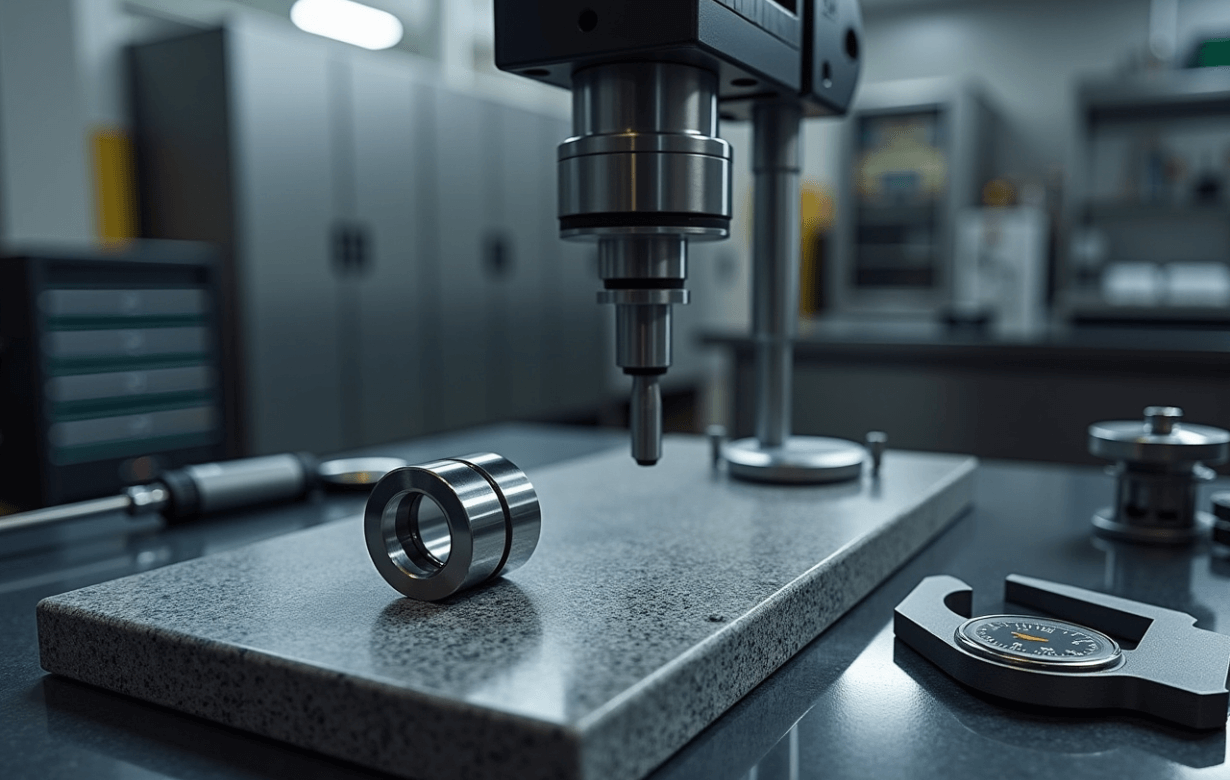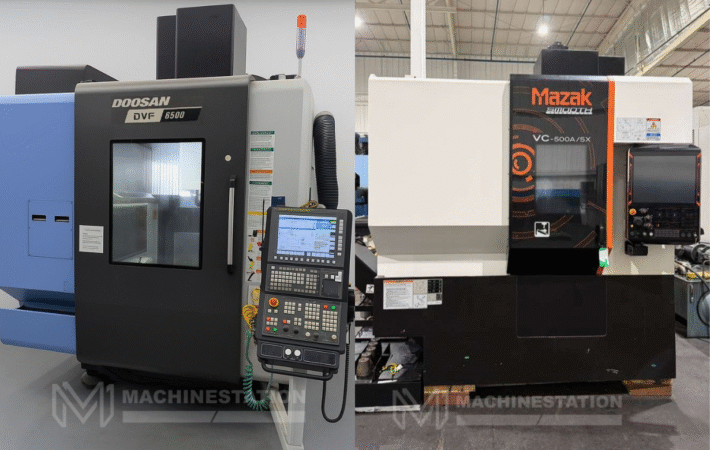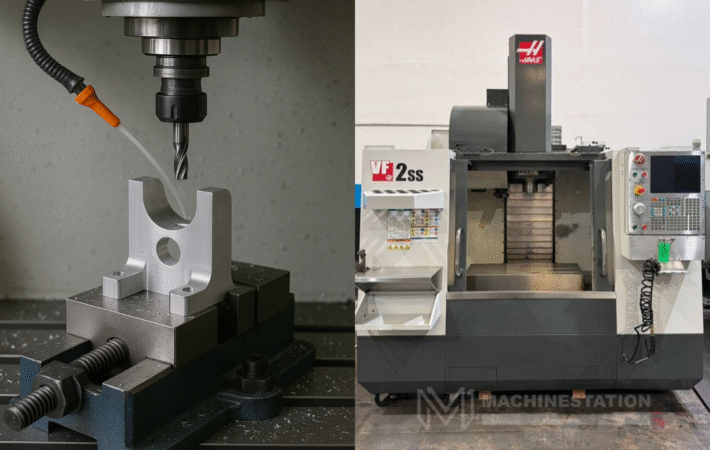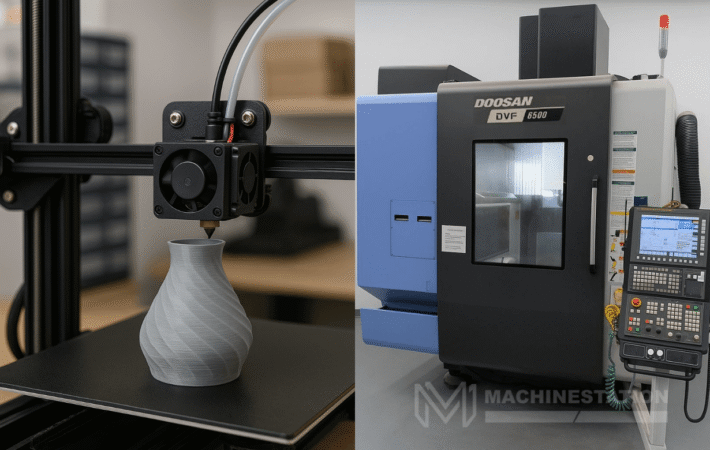CNC machines are renowned for their precision in manufacturing. Modern CNC machines have tolerances at a level that can never be achieved by manual manufacturing. So, the whole machining world has shown its trust in these machines to ensure they can get the best part for their respective businesses. Machining your parts or products through CNC machines kind of ensures a level of precision and accuracy, but sometimes there are flaws, too. As a responsible machining business owner, it becomes important for you to measure and inspect the quality of the CNC machine part, especially accuracy in shapes and surface finish. Then the question arises, how to inspect the quality of a CNC machined part? If you have the same questions, then don’t worry anymore because the solution is there in this blog, so read it till the end.
Why does the inspection and measurement of parts matter?
Before we go into finding out how to measure and inspect a CNC machined part, we need to know why it matters in the first place:
- Assurance of specification compliance: It is important to inspect a CNC machined part to make sure you can supply the best products to your clients, meeting their specific needs. This will quickly erode your customer’s trust, leading to loss of business and a tarnished brand reputation.
- Prevention of costly errors: If you make a lot of improperly finished parts with precision or surface finish mistakes, then it will lead to more rework, scrapped parts, wasted materials and machining times, and more delays in production. Early detection can prevent costly waste and delays in production.
- Ensures tight tolerance: When you deal with high precision industries like aerospace, defence, or the medical sector, you need to make sure that the machined products are meeting the exact accuracy because a 0.005-inch deviation can cause assembly errors in these sectors.
Key parameters in CNC machining that you need to measure:
Here are some of the major parameters that you need to check to ensure precision in your CNC machined product:
- Dimensional accuracy and tolerances: In every industry, every part needs to be of a specific dimension, and if that doesn’t happen, then there can be problems while assembling the parts. So you need to ensure that there is not a huge dimensional accuracy gap between the planned product and the produced product.
- Surface finish: The surface finish of the product is an extremely important parameter in industries like aerospace, where factors like friction exist, so you need to inspect the surface finish of the parts quite carefully.
- Material strength: You need to check the hardness or the strength of the material being used for machining because that can severely affect the durability of the machined product.
- Geometric features: You need to check different geometric features of the machined part like threads, angles, radii, slots, and holes to ensure that they are properly fit for the job and there won’t be any problem during assembly.
Common inspection methods for CNC machined parts:
Now, when you are inspecting the parts, there can be several ways, including normal visual inspection and different styles of machine inspection. Here’s a list of all of them:
- Visual inspection: The purpose of visual inspection is to quickly detect defects in objects like scratches, burrs, discoloration, and dents. You can take the help of magnifiers for better inspection, but the problem with this inspection is that its success hugely depends on the expertise of the inspector. To get the optimal results, make sure to keep an inspection checklist of what to look for and what to accept or reject.
- Dimensional inspection: This inspection method is used to ensure that all the critical dimensions are within the specified tolerances. You can use tools like vernier/digital calipers to measure the inside or outside dimensions of the part. You can use micrometers for diameter or thickness in small ranges, ideal for shafts or pin like structures.
- Coordinate measurement: This is a method of highly accurate 3D measurements through touch or laser probing. This method is ideal for verifying complex geometry against CAD. There can be two types of Coordinate measuring machines (CMM) – one is bridge CMMs, which ensure high precision, and the other is portable arms, which are more suitable but a bit less accurate. They can measure multiple features together with CAD comparison, and are ideal for GD&T evaluations. But there are cons of this method too, as the cost is high for these machines, and the setup is time consuming. Also, you will need highly trained operators to get the job done.
- Surface roughness measurement: This is the method to detect the surface roughness of parts that have a higher risk of wear, like bearings, seals, and optics. There are different surface roughness meters like contact profilometer, optical profilometer, and atomic force microscopy. Contact profilometers are accurate, but they are slow and can affect the soft surfaces; optical profilometers, on the other hand, are fast and preserve delicate parts. The Atomic Force Microscopy (AFM) is used for nanometer scale precision, but is mainly used for research and high-tech purposes.
- Non-Destructive testing: This method is highly efficient for detecting internal defects like inclusions, cracks, or voids without damaging the parts. One of the methods is ultrasonic testing, which uses sound to reveal internal cracks or voids. Magnetic particles and dye penetrants can be used to detect surface and near surface cracks for ferrous parts. X-ray and radiography testing can also be done to check the structure of the interior of the product, but it is used in restricted manners due to radiation threats.
- Functional and pressure testing: This is another popular strategy to measure and inspect the accuracy of a CNC machined part. In this process, the part is simulated for real world use to make sure that the part works as intended. Different tools are used for it, like the gears, which do meshing tests for backlash, noise, and fit. Also, pressure testing of fluid channels is used to check for leaks.
- Statistical process control: This is a method of monitoring production trends and catching deviations even before the part goes out of tolerance limits. Tools like control charts are used for this method. The dimensions are tracked in real time, which enables automated alarms and process controls.
Best practices for accurately measuring and inspecting CNC machined parts:
Here are some of the best practices that you need to follow while measuring and inspecting the accuracy of a CNC machined part:
- You need to start with a clear drawing and plan, make sure that all the dimensions and tolerances are specified, so there is no confusion during inspection.
- Make sure the product is properly cleaned after the machining is done because even tiny dust particles can screw your whole measurements.
- Ensure you are calibrating all your tools regularly, like gauge blocks or ring gauges, and maintain a proper calibration log.
- Inspect early during the machining process, which will help you detect probable defects even before they happen, saving both your time and money.
- Document everything to ensure you can trace the previous mistakes and issues, to ensure you don’t repeat them.
- Make sure whoever is doing the inspection job is well trained for visual detection, and also how to use other tools for other styles of detection.
- Experiment with different styles and tools, find which inspection method is best for you, and use that.
- Try to embrace automation at every possible chance, as automation can help you increase speed and repeatability, especially for high volume production.
Common challenges faced during measuring and inspecting CNC machined parts:
Here’s an extensive chart about the common problems you may face while checking the accuracy of a CNC machined part, and here’s how you can solve them:
| Challenge | Cause | Solutions |
| Dimensional Deviations | Tool wear, machine misalignment, thermal effects | Regular calibration, tool monitoring, temperature control |
| Surface Defects | Dull tools, improper parameters | Tool maintenance, optimize cutting conditions |
| Inconsistent Measurements | Uncalibrated tools, human error | Scheduled calibration, automated inspection |
| Missed Internal Defects | Inadequate NDT | Implement regular ultrasonic/X-ray testing for critical parts |
| Process Drift Over Time | Lack of SPC | Apply statistical process control, analyze trends |
Tips for beginners about inspecting CNC machined parts:
If you are new to the industry and have just gotten started with machining, then here are some additional tips for you:
- Start with visual inspection and hand tools until you develop strong expertise.
- Make a proper routine of inspection and make sure to add it to your regular workflow.
- Focus on cleaning the machining setup, as that can save the majority of the deflections from happening.
- If you are machining critical parts, then get a basic 3-axis CMM for that inspection and use it to learn and grow.
Modern trends: Digitization and Industry 4.0:
Here are modern trends that are changing the whole CNC machined parts inspection procedure:
- IoT sensors are getting embedded in CNC machines for real-time monitoring and instant deviation correction.
- Automated systems and robotic systems are helping human beings do inspection in a more seamless and past faced way.
- Data analytics is also helping machinists by helping them with predictive maintenance and process optimization.
Conclusion:
Measuring and inspecting CNC machined parts is a job that needs deep understanding and deep focus while doing the job, because even a very minute deviation becomes a big problem and causes assembly error. If you can’t supply precise parts with CNC machining, then you won’t be able to stay in business for long. So, if you want to buy precise CNC machines, then you must check our collection of used CNC machines and find the most precise CNC machine for yourself.






